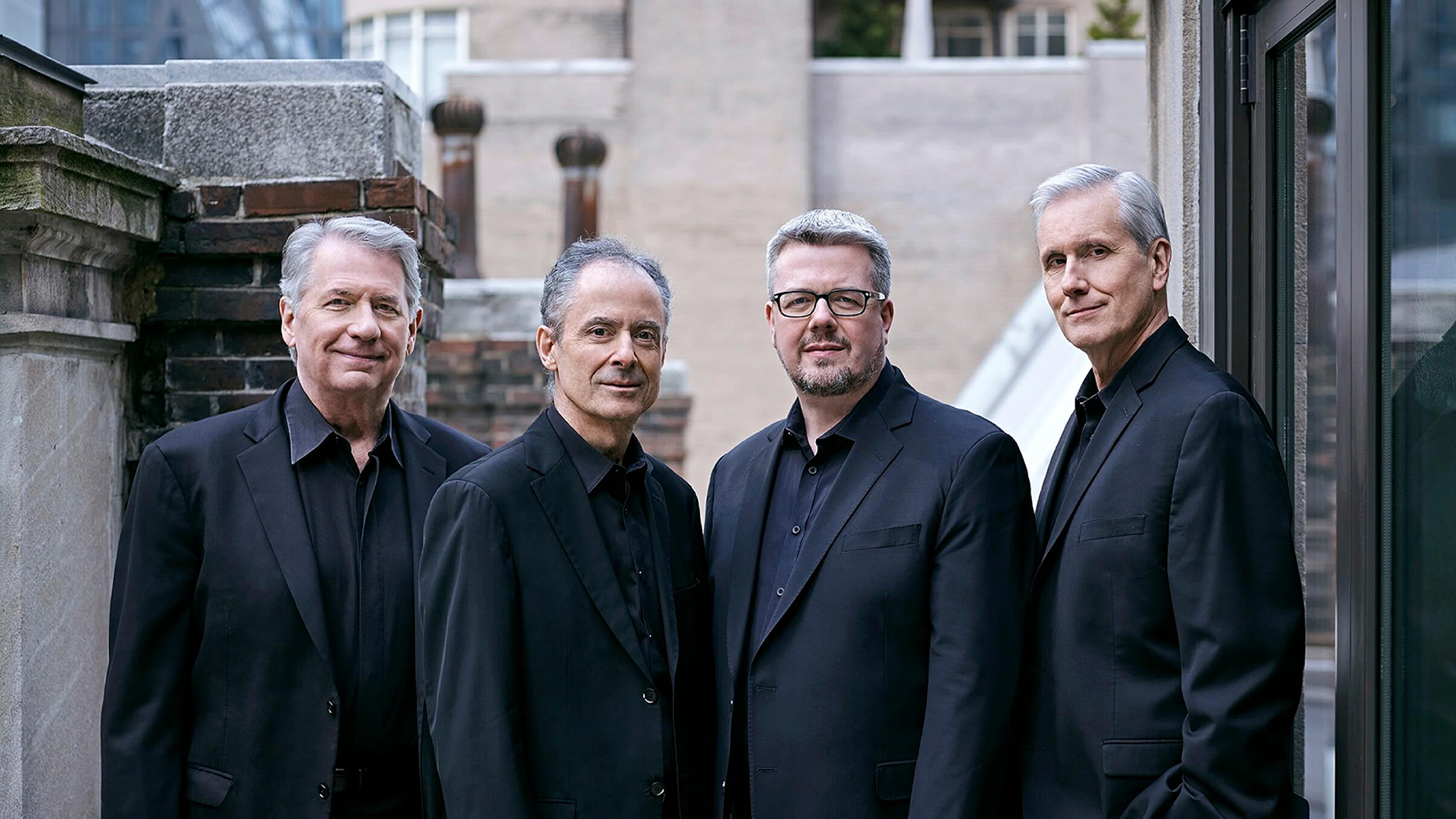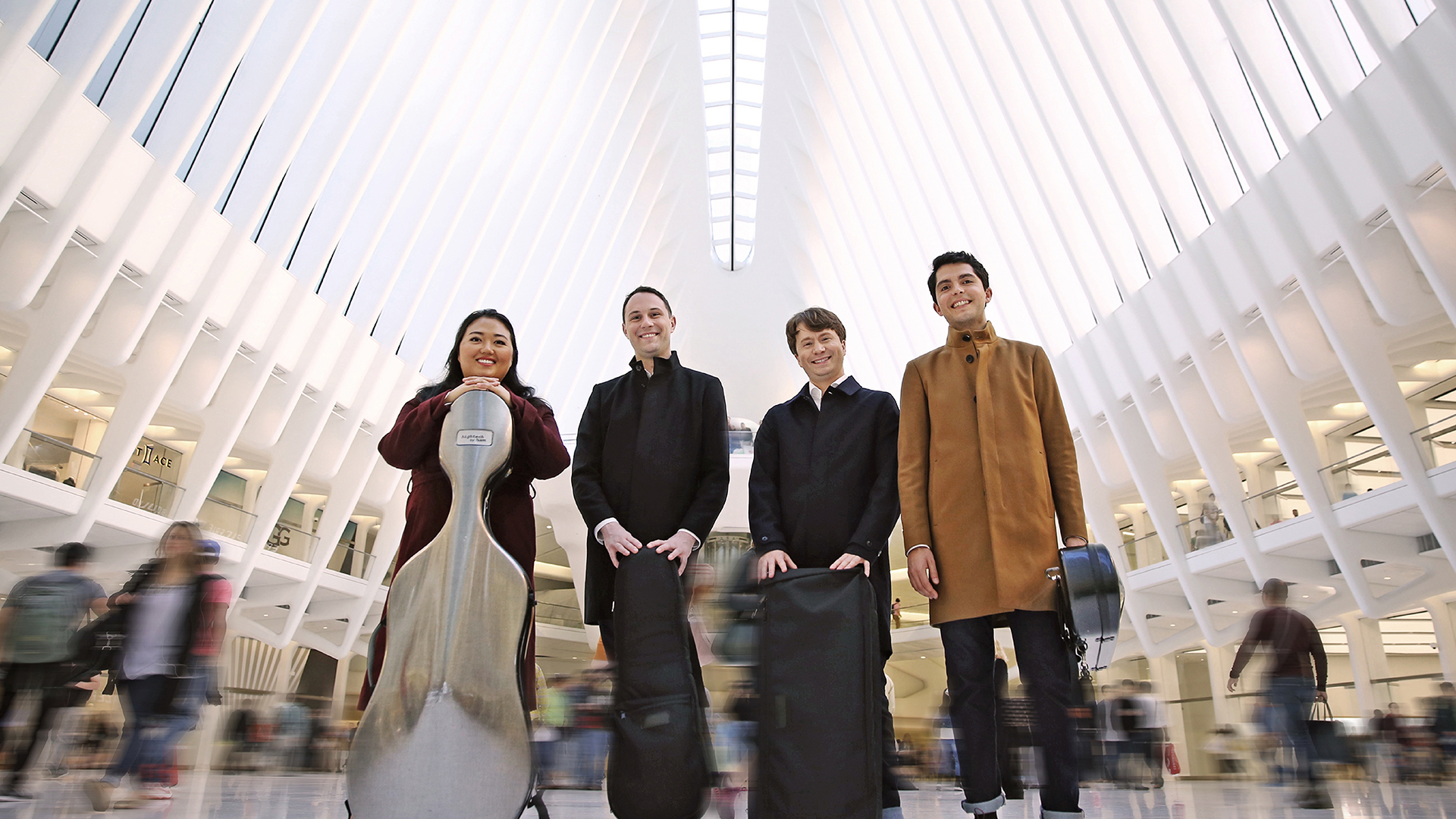By Lucy Caplan
Lucy Caplan is a Lecturer on History and Literature at Harvard University. In 2016 she received the Rubin Prize for Music Criticism.
Few ensembles prompt such lyrical musings as the string quartet. The phenomenon of four players onstage, working in what appears to be leaderless collaboration, is celebrated as a model of egalitarian democracy. The similarities among the four instruments’ timbres create a marvelously synthetic sound, in which multiple musical lines can combine seamlessly into one. Little surprise that it is the musical genre for which many composers have reserved their most beautiful music (Beethoven, for example, said that the Cavatina from his Quartet, Op. 130 was the only piece he’d written that could move him to tears). String quartets stand out, too, for the deep camaraderie that they require from the musicians who perform them.
This evening’s concert, a farewell to the Emerson Quartet at the conclusion of an illustrious decades-long career, is a testament to the breadth and power of the string quartet repertoire. True to the late-spring spirit of commencement, it features much-loved works alongside new ones, and it welcomes the group’s protégés, the Calidore Quartet, to the stage. Beginning with the new—a world premiere by Sarah Kirkland Snider—the program moves retrospectively to the final work in the genre by Shostakovich, then concludes with the exuberance of Mendelssohn’s Octet, a piece beloved by musicians and audiences alike for its infectious spirit, grace, and joy.
Sarah Kirkland Snider, Drink the Wild Ayre (2023)
In 1867, Ralph Waldo Emerson published “Merlin’s Song,” one of several poems that he wrote exalting the Arthurian legend in relation to Transcendentalist ideas about the natural world. The poem’s best-known lines—“Live in the sunshine, swim the sea, Drink the wild air’s salubrity”—have become deeply associated with Emerson, as they capture his signature embrace of natural beauty and celebration of the human capacity for wonder. If those qualities once inspired the group’s choice to honor Emerson via its name, they have also shaped the ensemble’s adventurous approach to music-making.
For Snider, who listened devotedly to the Emerson Quartet’s recordings while writing her first string quartet more than twenty years ago, returning to the genre was something of a full-circle moment. She reflects, “I’m a more relaxed composer now; I trust myself more, so I had more fun writing this one than my first (which took a grueling two years).” The piece playfully replaces the “air” of Emerson’s quotation with the musical “ayre,” a term for a song-like, lyrical piece. This aria-esque, melodic work is underscored by a “wild” sense of pulse, described by the composer as “imitative rhythmic asymmetry that leads to lilting, off-kilter rhythms.”
Dmitri Shostakovich, String Quartet No. 15 in E-flat minor, Op. 144 (1974)
By the time he wrote his final string quartet in 1974, Shostakovich had directly endured many of the political horrors of the twentieth century, falling squarely in the sights of Soviet repressive forces. Ever since his opera Lady Macbeth of Mtsensk was officially denounced in the publication Pravda in 1936, he had lived in a climate of fear and surveillance, stepping in and out of political favor. Much of the music that Shostakovich composed under these taxing circumstances is ambiguous, even cagey: are we meant to hear a note of sarcasm in that jaunty, patriotic march? Is that tragic cry as overt as it seems to be? Is that hint of a folk song meant to be a veiled allusion, or is it simply a lovely tune?
Given the interpretive obscurities that cloud so much of Shostakovich’s music, though, his final string quartet stands out for the uncommon clarity of its emotional palette. Mortality was on his mind: in addition to living under an oppressive political regime, Shostakovich also contended with years of ill health, and by the time he wrote his final three string quartets in the 1970s, he was battling the cancer that would eventually cause his death in 1975. The piece is comprised of six adagios, to be played without pause. Its ceaselessly slow pace is matched by its insistent attachment to the key of E-flat minor. Rather than offering a narrative of progress or evolution, the work plumbs the depths of its fundamental ideas. Within movements titled “Elegy,” “Funeral March,” and “Nocturne,” it offers a profound meditation on tragedy. There are fleeting references to other, sunnier times and places—a snippet of a half-remembered waltz, a solo violin’s flight of fancy, a vigorous set of chords—but the work’s abiding focus is on coming to terms with tragedy. Even after so much mournfulness, the closing Epilogue retains an ability to shock the listener. After a frenetic opening passage for solo violin; an answer in the cello accompanied by vigorous pizzicato; and a progression of melancholy melodic lines, we enter a landscape of eerie, high-pitched chromatic passagework—a chill-inducing gust of wind whistling by in the dark.
Felix Mendelssohn, String Octet in E-flat Major, Op. 20 (1825)
If Shostakovich’s quartet can feel unrelenting in its despair, Mendelssohn’s octet displays a polar-opposite commitment to exuberance. A prodigiously talented sixteen-year-old when he wrote the piece, the composer chose to write for the unusual ensemble of four violins, two violas, and two cellos—as if a single quartet’s worth of players couldn’t possibly contain so much vivacity. The first violinist he had in mind as he wrote, Eduard Rietz, was a friend and mentor just a few years older than the composer, and Mendelssohn’s admiration for Rietz’s talents shines through in the bravura gestures that he offers to this player throughout the piece.
The quartet’s first movement begins with a splash, as a bold, climbing arpeggiated gesture is introduced in the first violin and then passed around the ensemble. Written in sonata form, it is consistently kinetic, with an undercurrent of restlessness underlying even its sweet second theme. The mood changes in the second movement, a lyrical, minor-key Andante which features plaintive solo melodies interspersed with stormier chromatic passages that are voiced by various combinations of players. The third movement is an early example of the fantastical, rapid-fire approach to scherzos which would go on to become a hallmark of the composer’s style; his sister, the composer Fanny Hensel, would later write that when listening to this movement, “one feels close to the world of spirits lightly carried up into the air.” And the finale is fittingly capacious: a gigantic fugal piece whose busy, eighth-note subject is introduced in the cello’s low register before bouncing up and around the ensemble, finally landing in the first violin’s stratosphere. Like the octet as a whole, the movement bubbles over with generosity and warmth, ultimately reaching a high-octane close.






